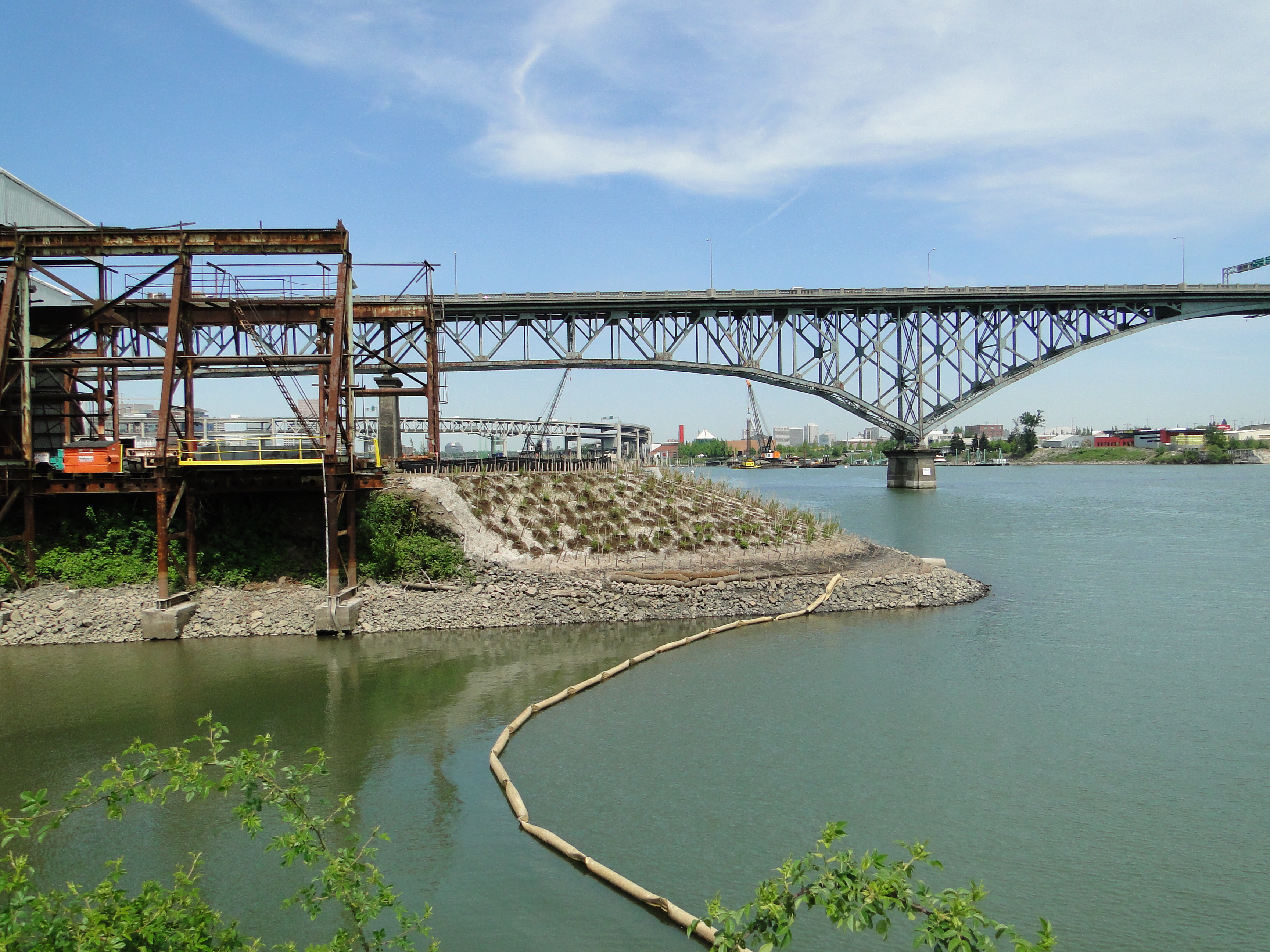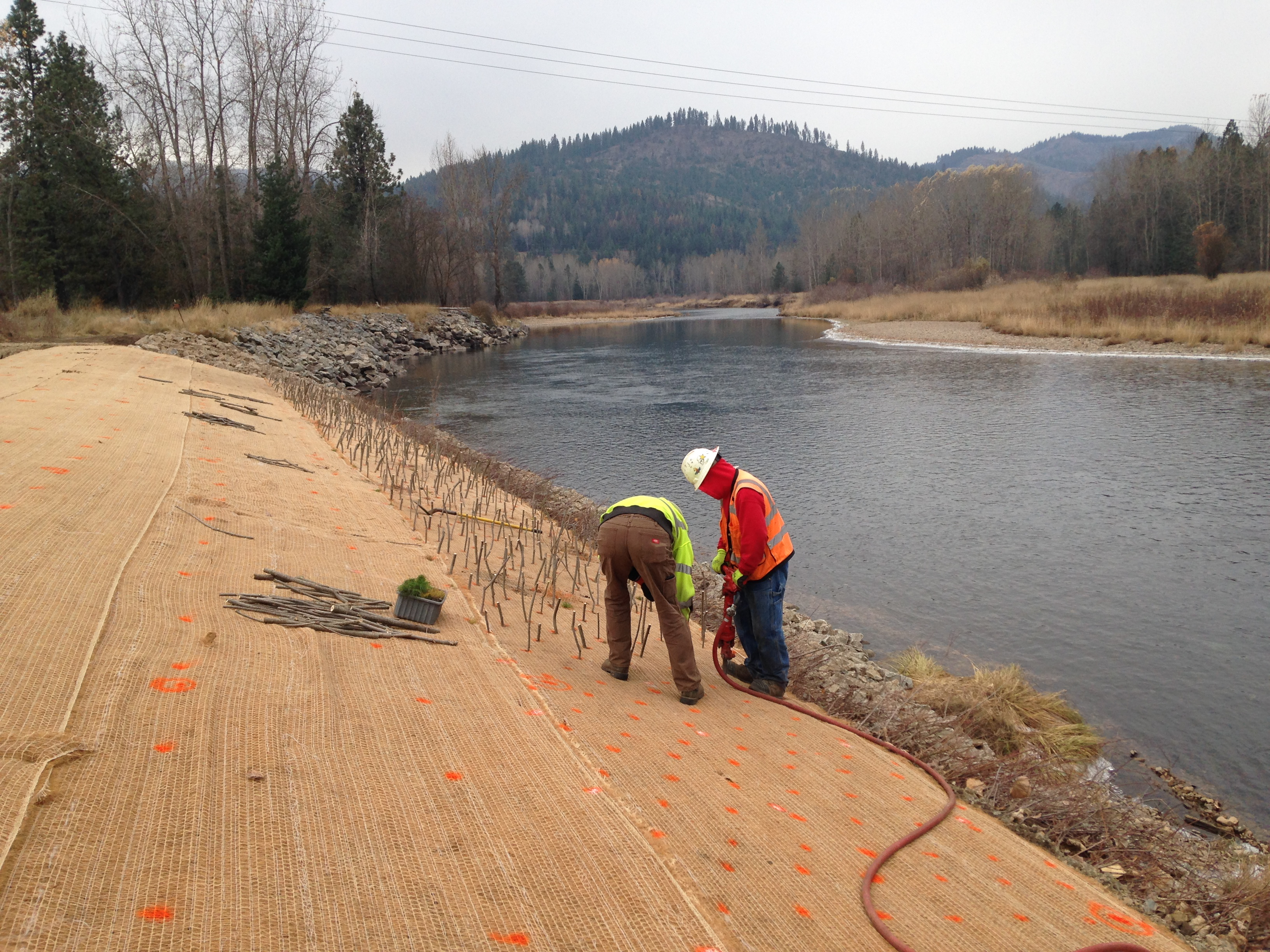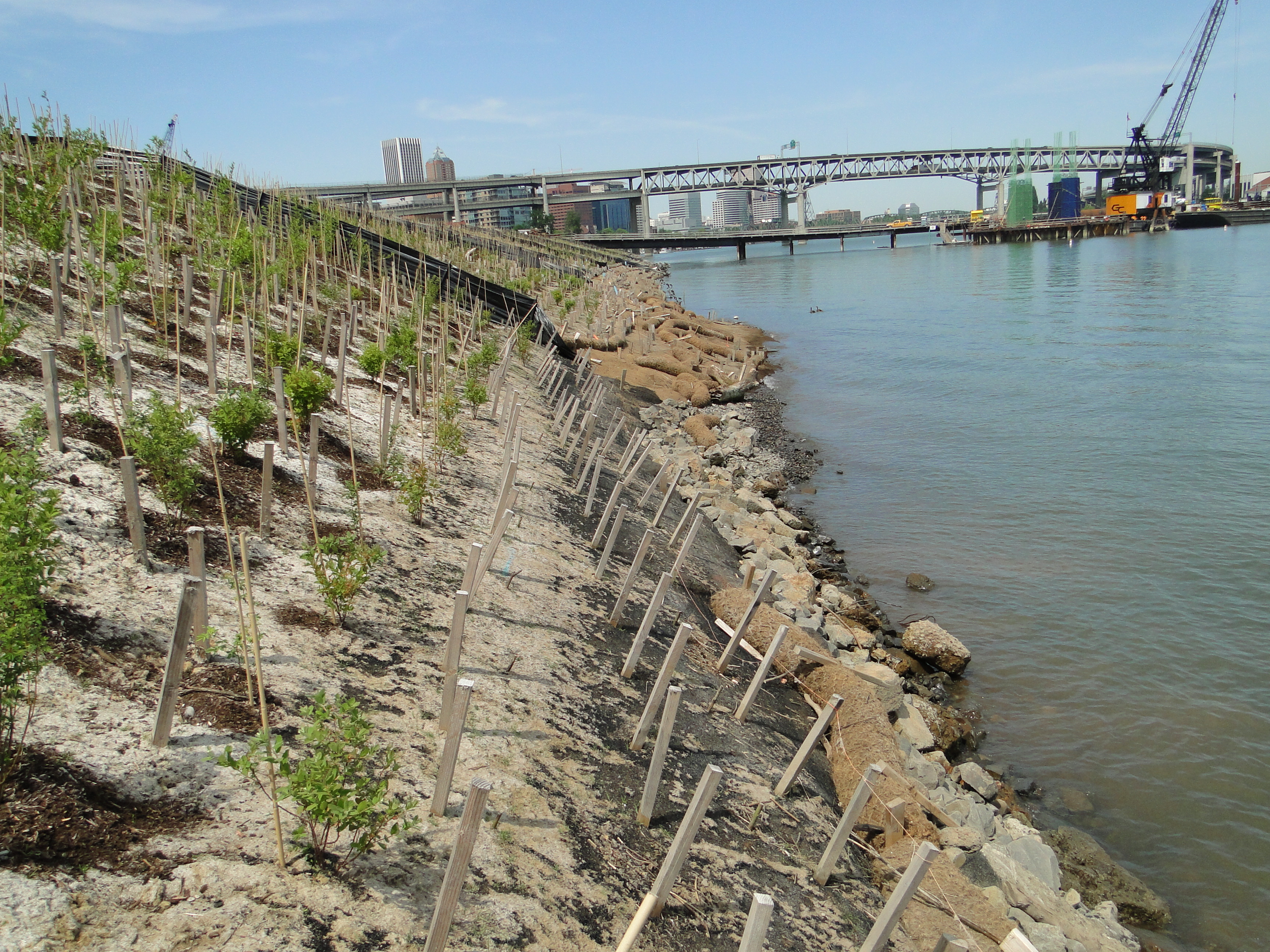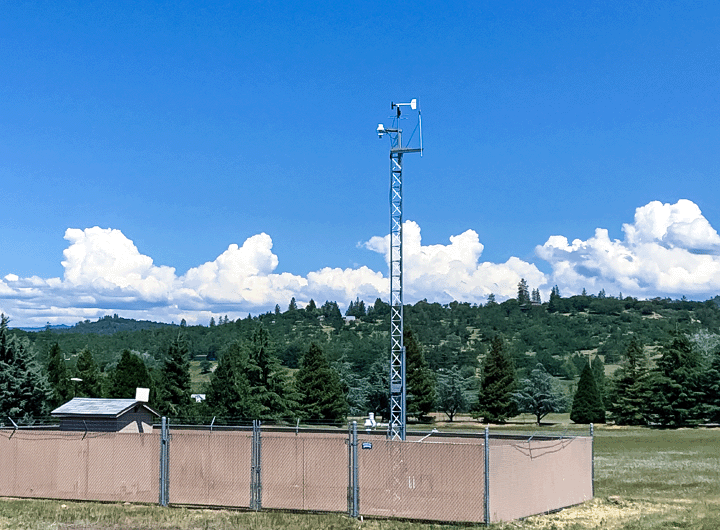In the News
Stable Banks, Unique Conditions, Lasting Solutions

The success of a bank stabilization project hinges on the ability to explore a variety of potential solutions and identify the most effective option for any given site. MFA has seen success with many different types of projects, all with their own unique challenges and conditions. Thanks to a strong team of experts in bioremediation and sediment remediation, MFA leads the way in integrating bioengineering approaches into sediment projects. Below are three recent projects that illustrate MFA’s expertise in applying innovative, cost-effective solutions in any environment.
Kahnderosa Riverbank near Coeur d’Alene, ID
Along the bank of the main stem of the Coeur d’Alene River in northern Idaho, the dense root masses of willow trees are being used in a remediation effort. The river, contaminated with tailings from 100 years of historical mining practices, has been aggressively eroding the bank and exposing harmful contaminants, including lead. MFA is assisting remediation and biostabilization efforts to control flood damage along the river by slowing the flow of water and creating a stable shoreline.
The technique being applied involves stacking layers of soil wrapped in biodegradable fabric with willows planted horizontally in between. The root masses, as they spread and lengthen, will help slow the flow of the river, benefiting fish species in the area as well as lessening the erosion along the approximately 500 feet of bank where the remediation is taking place.
MFA is working for the Coeur d’Alene Trust along with engineering company CH2M Hill on this pilot project, which will conclude in spring 2015. Incorporation of riparian plantings such as willows and other woody species is a proven and economical method for residents to slow erosion on their properties.
Carty Lake in Ridgefield, WA
The Lake River Industrial Site, owned by the Port of Ridgefield in Ridgefield, Washington, USA, was home to a wood-treating facility from 1964 through 1993. The site is bordered on three sides by the Ridgefield National Wildlife Refuge. After completing an “emergency source removal action” involving a large-scale steam remediation system, MFA found that the wetland habitat of Carty Lake had also been contaminated with dioxins and other wood-treating chemicals, likely a result of discharge from former stormwater outfalls.
MFA designed, obtained permits for, and implemented the remedial action, which involved temporarily dewatering and excavating sediment from 1.5 acres of wetland in the wildlife refuge. A blend of clean sand and topsoil was placed within the excavation prism to contain any residual contamination and provide a base for new native vegetation. The design included permanent stabilization of an approximately 1,800-foot-long failing bulkhead by the placement of engineered soil embankments. The design and implementation included significant landscape components. Tracts of invasive plants were removed mechanically; the wetland, transitional zones, and upland areas of the site were completely revegetated with native plant communities to provide wildlife habitat, prevent erosion, and restore culturally significant plants to an area historically used by Native American tribes.
Through both careful design and an extensive grading effort, the restored wetland surface retained the nuanced topography and “pocket-habitats” of the preconstruction conditions.
Willamette Riverbank in Portland, OR
A 14-acre bank and sediment cap was required to address soil and sediment contamination at a former ship-breaking and salvage facility on the Lower Willamette River in Portland, Oregon. An iterative design process was begun with the Oregon Department of Environmental Quality to develop the riverbank and sediment cap designs to address PCBs, PAHs, metals, and asbestos contamination in sediment and bank soil. MFA and the design team developed concepts that would reduce ecological impacts associated with the remedy and its implementation, improving the chances of success for listed fish (salmon and steelhead), as well as enhancing, to the greatest extent possible, riparian and aquatic habitat. These goals were achieved with the use of bioengineering to stabilize this nearly 0.5-mile long riverbank. Construction included the placement of nearly 150,000 cubic yards of sediment cap and bank fill; excavation of more than 40,000 cubic yards of structurally unstable or hot spot contaminated soil; and installation of both bioengineered vegetation and biotechnical enhancements in sensitive areas .
.
The initial phase of bioengineered riverbank planting included the installation of turf reinforcement mat or coir matting and over 6,200 linear feet of willow and dogwood fascines, and planting of 15,000 native landscape plants and shrubs and 300 native trees. A second phase of planting took place two years into the performance period, targeting areas where plant establishment was challenged by wildlife and unseasonably high water conditions. An additional 20,000 emergent plants (seedlings or larger) and an additional 15,000 willow and red twig dogwood live-stake cuttings were planted during the second phase. As a remedy for this bank stabilization, bioengineering is superior to rock armor alone because this solution improves overall aquatic and riparian habitat in the Lower Willamette River; provides significant root-mass stabilization and a protective canopy for the clean cap over contamination; and improves the aesthetic of a critical redeveloping riverfront property in downtown Portland’s south waterfront.



